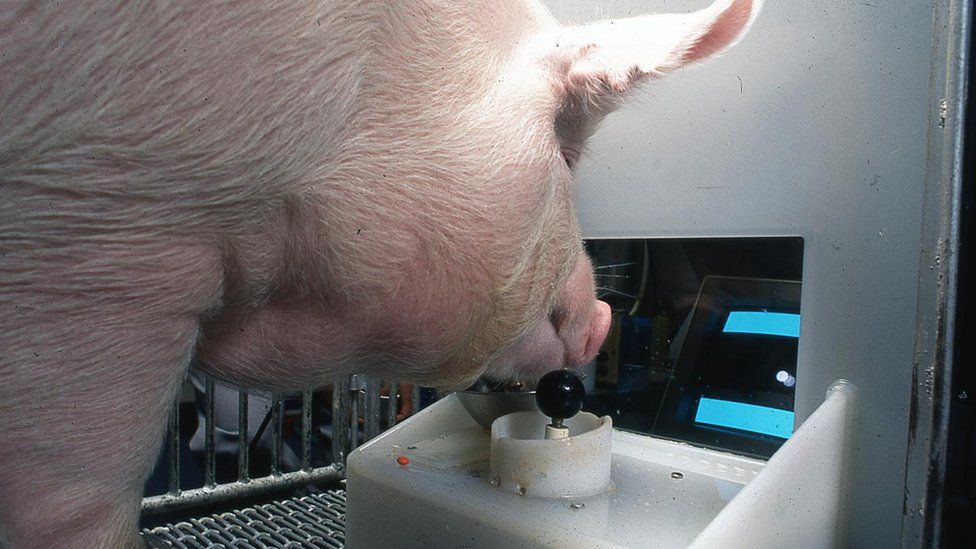Pigging Out on Video Games
Ask any parent of a tween or thereabouts about screen time, video games, and the like, and they’ll tell you what you already know: the kids love them, and maybe too much. Maybe the devices and experiences are addictive in some way — that’s a story for another time, perhaps. Or maybe the kids are just pigs.
Like this one.

Yes, that’s an actual pig playing an actual video game, one not too dissimilar to the 1972 classic Pong. And the pig, like the hypothetical child named above, loves it.
In theory, pigs shouldn’t be able to play video games. Pro gamers need to have good vision, especially when looking at the nearby screen, and they need to have great manual dexterity in order to manipulate some pixels via handheld or touchscreen controls. And as the BBC notes, pigs are lacking in these categories: “they are far-sighted animals with no hands or thumb.” Oh, and they’re typically not going to care about saving princesses from castles, mining ore, or leading the Jacksonville Jaguars to a perfect season.
But for researchers, this wasn’t a problem — it was a challenge. In 1997, a research team game built specifically with pigs in mind. Per the AP, the game had a special screen to compensate for the pigs’ vision and “a tractor gear-shift stick” instead of a standard joystick. The pig Pong (sorry!) game wasn’t a standard experience, either; it was built so that pigs could win — and earn a treat if they succeeded. Smithsonian explains the rules (and rewards):
There are three bright blue walls displayed on a black screen. Move the cursor to a wall, the computer goes bloop! and a treat pops out. After some success, one wall disappears. With only two walls, it’s a little bit harder. Then, after more bloops and treats, the screen drops down to one blue wall.
And perhaps that’s not surprising. Pigs are believed to be rather intelligent animals, and certainly in this case, the payoff was a good incentive to play a game. (Giving pigs a treat in exchange for moving their snout to a certain location? That seems like a good deal, if you’re a pig.) But in this case, it may turn out that the pigs just like playing the games, especially if there’s an audience. The BBC explains:
And the pigs even continued playing when the food reward dispenser broke – apparently for the social contact.
Usually, the pigs would be given a food pellet for “winning” the game level. But during testing, it broke – and they kept clearing the game levels when encouraged by some of the researchers’ kind words.
And that could be a big deal. As one member of the research team told the AP, “the happier the pigs are, the better they grow,” and it may turn out that video games are an easy way to keep a penned pig happy. It works for humans, after all.
Today’s Long Read: “The Charmed Life of Esther the Wonder Pig” (The Walrus, 22 minutes, September 2018). The subhead: “What one celebrity pet can tell us about our curious and complicated relationship with animals.”
From the Archives: Short and Snout: The problem with teacup pigs is that there is no such thing as teacup pigs.
